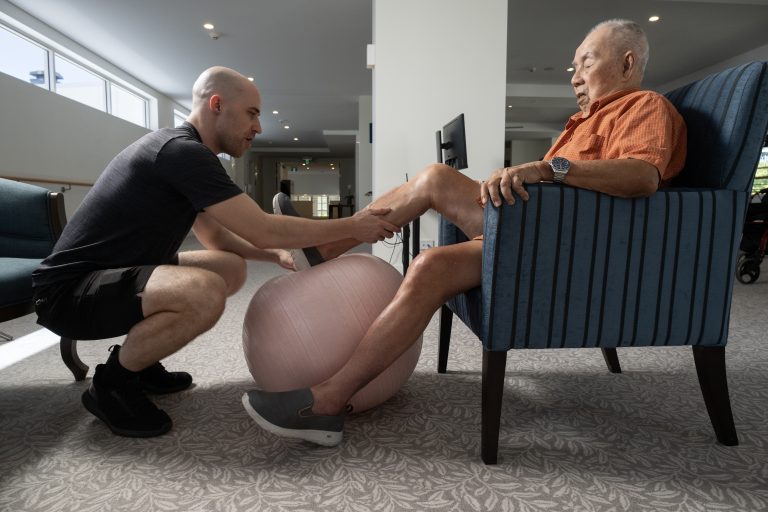What is Frozen Shoulder?
Frozen shoulder, or adhesive capsulitis, is a condition characterised by stiffness, pain, and limited range of motion in the shoulder joint. It typically progresses through three stages: freezing, frozen, and thawing, each lasting several months. While the exact cause remains unclear, it is often associated with diabetes, prolonged immobility, or shoulder injuries (Zuckerman et al., 2020).
Symptoms and Diagnosis
Frozen shoulder presents with a gradual onset of pain and stiffness. Diagnosis is primarily clinical, supported by physical examination and patient history. Imaging, such as X-rays or MRI, may be used to rule out other conditions like rotator cuff tears or osteoarthritis (Bunker, 2011).
Evidence-Based Physiotherapy Management
Physiotherapy plays a crucial role in managing frozen shoulder, particularly in the early stages. Treatments focus on pain relief, improving range of motion, and restoring function. Evidence suggests that a combination of manual therapy and exercise is effective (Kelley et al., 2009).
- Manual Therapy: Techniques like joint mobilisation and soft tissue massage can help reduce pain and improve mobility.
- Exercise Therapy: Stretching and strengthening exercises are crucial. Studies show that supervised exercise programs are more effective than home-based exercises alone (Maund et al., 2012).
- Electrotherapy: Modalities such as ultrasound or TENS may provide short-term pain relief, though evidence is limited.
Medical Interventions
If conservative treatments fail to improve symptoms, medical interventions may be considered.
- Corticosteroid Injections: Intra-articular corticosteroid injections have been shown to reduce pain and improve function, particularly in the freezing stage (Ghaznavi et al., 2020).
- Hydrodilatation: This involves injecting a mixture of saline and corticosteroids into the joint capsule to stretch it, often leading to improved range of motion (Nguyen et al., 2017).
Surgical Options
For patients who do not respond to conservative or minimally invasive treatments, surgery may be an option.
- Manipulation Under Anaesthesia (MUA): MUA involves forcibly moving the shoulder joint while the patient is under general anaesthesia. It can quickly improve mobility but carries risks such as fractures or soft tissue injury (Grewal et al., 2014).
- Arthroscopic Capsular Release: This minimally invasive surgery involves cutting the thickened joint capsule to restore mobility. Evidence suggests that it is highly effective, particularly for patients with severe stiffness (Tauro, 2008).
Post-Surgical Rehabilitation
Rehabilitation following MUA or arthroscopic capsular release is critical for optimal outcomes. Physiotherapy focuses on pain management, restoring range of motion, and strengthening the shoulder. Adherence to a structured rehabilitation program significantly enhances recovery (Sun et al., 2021).
Conclusion
Frozen shoulder can be a challenging condition, but evidence-based treatment approaches—from physiotherapy to surgical interventions—offer effective solutions. Early diagnosis and tailored management plans are crucial to improving outcomes. If you’re experiencing shoulder pain or stiffness, consult a physiotherapist or healthcare provider to develop a personalised treatment plan.
References
- Ghaznavi, K., Perlmutter, G. S., & Vogel, M. (2020). Efficacy of corticosteroid injections in frozen shoulder. Journal of Shoulder and Elbow Surgery, 29(8), 1503-1511.
- Grewal, H., Grewal, P., & Pooni, S. (2014). Manipulation under anaesthesia for frozen shoulder: A retrospective study. Shoulder & Elbow, 6(1), 22-26.
- Kelley, M. J., McClure, P. W., & Leggin, B. G. (2009). Frozen shoulder: Evidence and a proposed model guiding rehabilitation. Journal of Orthopaedic & Sports Physical Therapy, 39(2), 135-148.
- Maund, E., Craig, D., Suekarran, S., et al. (2012). Management of frozen shoulder: A systematic review and cost-effectiveness analysis. Health Technology Assessment, 16(11), 1-264.
- Nguyen, T. M., & Crowther, S. M. (2017). The efficacy of hydrodilatation in adhesive capsulitis. BMJ Open Sport & Exercise Medicine, 3(1), e000303.
- Sun, Y., Lu, S., Zhang, P., et al. (2021). Postoperative rehabilitation following arthroscopic capsular release for frozen shoulder. The American Journal of Sports Medicine, 49(7), 1874-1883.
- Tauro, J. C. (2008). Arthroscopic capsular release for the treatment of idiopathic frozen shoulder. Arthroscopy: The Journal of Arthroscopic & Related Surgery, 24(8), 944-950.
- Zuckerman, J. D., & Rokito, A. (2020). Frozen shoulder: Diagnosis and management. The Journal of the American Academy of Orthopaedic Surgeons, 28(6), e252-e259.
GM Physiotherapy is here to support you every step of the way, from conservative care to post-surgical rehabilitation. Contact us to learn more!





 Back to all posts
Back to all posts

